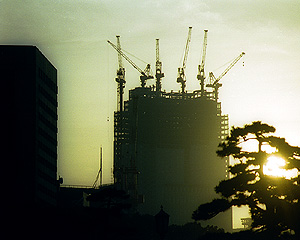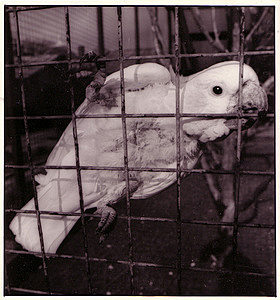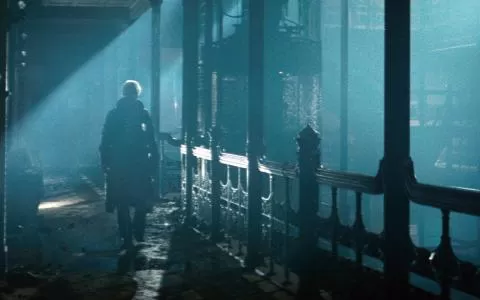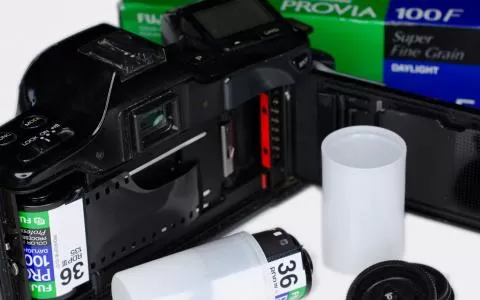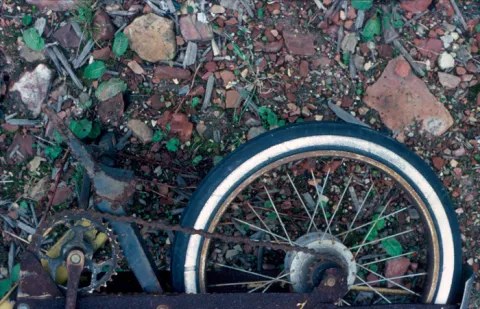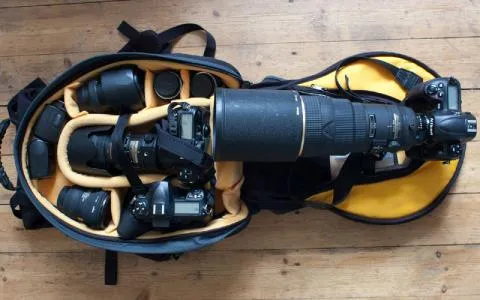No, it's not like I shoot film. I did go 100% digital the moment I acquired my first DSLR. But my photographic upbringing was in film, and that still marks my way of thinking and shooting.
I come from a film background. My photo career until now has consisted of more than 30 years of shooting film and 5 years of shooting digital. So my deep dwelling shooting habits are film-habits. I'm a film photographer.
Of course the arrival of the digital age has changed the way I shoot quite a lot. Today I don't bother nearly as much about the number of frames I shoot. I know that each frame will not cost money, eat into my film stock or leave me with significantly less images in the camera. Back in the old days, I would constantly glint at the frame counter, and like a western gunslinger, I would count my shots and always know how many bullets I had left in the drum.
Think about it. You started out with 36 frames, and could be down to 10 within minutes. In situations where things were happening fast, you had to think about every single frame you exposed. And sometimes you had to skip a good moment in order to save images for an even better one that could come... or not.
Expenses!
You knew that film changes were inevitable. I would shoot many rolls of film in one day, and changing film was a thing I could do blindfolded.
Modern film cameras would rewind a film in seconds, and as soon as that buzzing sound started, I went into a series of movements: grab new film from pocket, open canister, get out unexposed film, open camera, remove exposed film, dunk new film into camera, pull film strip to red mark, close camera, drop exposed film into canister, put in exposed film pocket, grab camera and shoot on.
This could be a thing that could be done in about the time it takes to read the sentence. I didn't think much about it before after a day's shooting, dropping the films off at the lab together with the number of prepaid tickets required to pay for development and digging into my depot of fresh film to fill the bag and the pocket. Expenses!
I'm a film photographer.
Changes
What a relief not to have these expenses anymore. I shoot on the wrong side of 20.000 digital images every year, and if I had to pay for film and development and spend time at the light table sorting, cutting and maybe framing them I'd be doing nothing else.
No, digital has definitely brought about some changes.
And then again... I still have a lot of my old film ballast.
Come to think about it, what do I still do that I learned in my film era?
Handling
I learned to handle an SLR in my film era. More than 30 years of large cameras with interchangeable lenses and pentaprism viewfinders has given me some routine in every aspect of SLR's: packing, handling, carrying, firing, changing lenses and so on.
Not to mention using a viewfinder.
Many newcomers to DSLR's look at the back for live view -- a facility that only just came to DSLR's -- and wonder how you can shoot looking through a viewfinder. I find myself enjoying the viewfinder every time I get out my SLR's.
Composing
All the skills that fall in the area of creating an exiting image; placing subjects, using light, seeing lines and symmetry, seeing the motif -- I learned all that years ago. And the hard way too: every image counted, so getting it right the first time was important.
Exposing
Modern cameras are wonders when it comes to exposure. They have all sorts of intelligence built in, and will expose almost any odd situation as they should. High key snow, low key camp fire scenes, contrasty scenes, scenes with strange color casts, into the sun, away from the sun. You name it, they handle it. But I still find myself bypassing the camera's choice ever so often, and intuitively over and underexpose, stop down the exposure or drag the shutter for certain scenes based on my knowledge of what the camera will see compared to what I see -- or maybe rather: want the camera to see.
Developing
OK, I know that I don't develop digital images as such, but the mindset is in many ways the same when I open up an image for the first time. What's hidden in those dark spots? Is the image sharp? What can I do with it? In spite of the LCD-screens on the back of DSLR's and the exposure evaluation tools such as histograms and blinking highlights and dark areas, I'm still not sure whether I actually hit it before I get the image into my digital darkroom -- Photoshop.
Thinking
Yeah, I know that this sounds a little self-indulgent, but I really believe that a long history with film makes me think more about each image. Well, maybe not each image, but then each scene or subject. In the old days that would be just a few frames, but today each scene may very well wind up consuming 20-30 or even 50 frames. I still think I use trial-and-error less and proven concepts more because I used to have to in order to save money and time.
